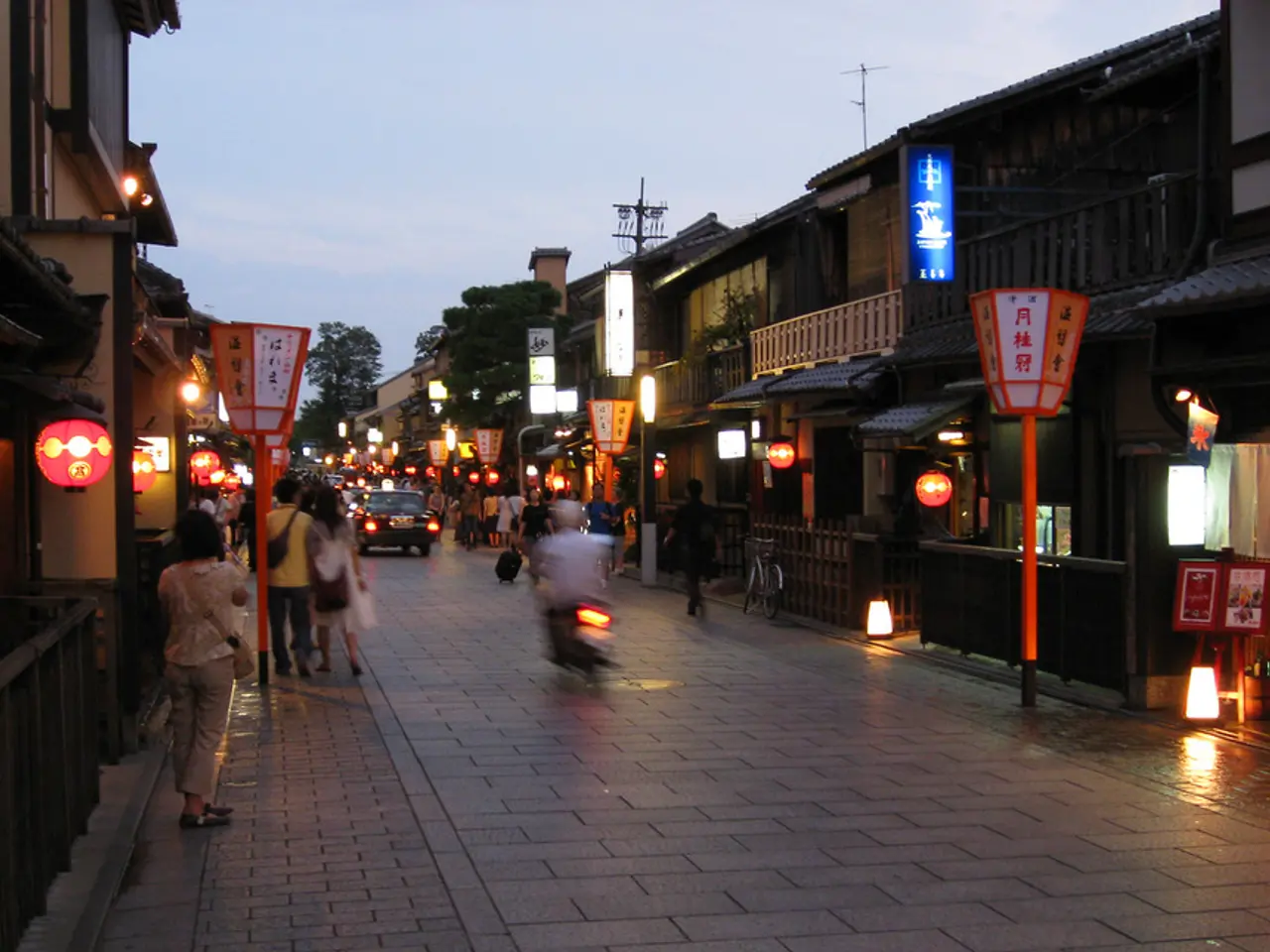Offenbach city considers mobile tree trunks as a potential temporary green solution
In the heart of Offenbach, a city known for its industrial past, a new chapter unfolds as the city embarks on a mission to create a Green Belt in its city centre. This ambitious project aims to increase urban green spaces, link existing parks, and enhance environmental quality, ultimately improving residents' quality of life and contributing to sustainability goals.
However, the city faces several challenges in implementing this vision. The dense urban core, with its industrial or commercial uses, presents a significant hurdle. For instance, the former paint factory is now being redeveloped for logistics use by Panattoni, reflecting a common challenge—transforming or repurposing former industrial land for green space instead of new commercial or industrial development.
This tension between preserving and expanding green areas versus economic development needs is evident. The Panattoni Park logistics project showcases Offenbach's ongoing industrial and commercial development in centrally located sites, emphasizing sustainability in new construction but not increasing green open space.
Offenbach is also advancing environmental sustainability via projects like Honda's green hydrogen production facility. While these initiatives reflect a commitment to eco-friendly initiatives, they do not substitute for physical green spaces in the urban fabric.
The redevelopment involved in creating a Green Belt involves overcoming contamination or structural issues on former industrial sites, securing funding, and balancing stakeholder interests, including residents, businesses, and planners. These complications can slow project delivery.
In the meantime, the city has turned to mobile tree tubs as an interim solution at the S-Bahn station entrance square. Despite some initial transplant shock, the young trees have since recovered. The city is also committed to a comprehensive redesign of this square, aiming for significantly more greenery.
A planning office has been commissioned to develop a concept for a Green Belt from the German Unity monument, through the Stadthof, to the Hugenottenplatz. The "Green Belt" concept involves local residents in its development, although the exact details of the plan and a precise schedule are yet to be finalized.
One alternative for permanent greening in areas with numerous supply lines and limited space is the use of permanently installed concrete tubs, like those used at the Hugenottenplatz. However, the cost of ground-bound plantings can reach up to 17,000 euros per tree location due to the complex installation of root spaces and irrigation systems.
Despite these challenges, Offenbach remains steadfast in its goal of a Green Belt in the city centre. The city has allocated funds for the project, signalling its commitment to this green vision for its urban landscape.
- The Green Belt project in Offenbach's city centre also encompasses the integration of green spaces into other sectors, such as home-and-garden or lifestyle, to foster a harmonious relationship between urban growth and environmental-science.
- In addition to the Green Belt project, Offenbach encourages residents to embrace gardening and sustainability at home to enhance overall environmental quality and support the city's sustainability goals.
- To complement the Green Belt, the city could explore implementing an "Other" approach that integrates green spaces into various commercial and industrial sectors, fostering a more sustainable and environmentally friendly lifestyle for its residents.






